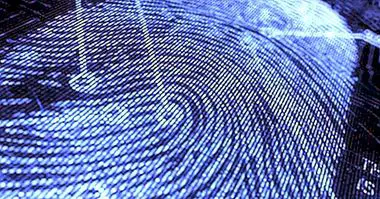Psychological profile of the animal abuser, in 7 traits
Animal abuse is a phenomenon that exists with some frequency in our society, because you only have to take a look through social networks to realize that there are many individuals that hurt, torture and infuse pain to defenseless animals.
And although many people are indignant at this type of behavior, this cruelty towards animals is not always condemned by our society . You just have to see the passion that bullfighting or some cultural phenomena such as the "embolado bull" awaken.
In these latter cases, the phenomena of group influence are decisive, but in others, especially those in which individuals act alone, there are a series of features that predominate in the personality of the animal abuser. In this article we will talk about this topic and will delve into the psychological characteristics of these types of abusers.
- Related article: "The 9 types of abuse and their characteristics"
Motivations to carry out animal abuse
Regrettably, the cases of animal abuse continue repeating in the world , and it is not strange either, because human beings can carry out atrocious and savage behaviors. But ... what can be going through the minds of these people so that they are able to behave so cruelly against dogs, cats and other animal species?
This is what Alan Felthous, a psychiatrist who led an investigation to determine what are the reasons that lead an individual to become an animal abuser, asked himself. According to the data of his study, the main motivations are:
- Project frustration on the animals and use them as a scapegoat
- Show power and authority
- Show submission
- Instill fear
- Doing harm as a way of fun
- Feel pleasure seeing another suffer
- As part of the show and the bets: bullfights, dog fights. traditional holidays
Types of animal abuse
Some studies show that in 30% of the cases the animal abuse is carried out by young people , and many times the animal abusers are more likely to be family abusers in the future: they are 5 times more likely to be. Now, there are two ways to mistreat animals: directly and indirectly.
Direct abuse is one in which the person performs a series of behaviors that are intended to harm the animal at that particular time, for example, beating or torturing. In contrast, indirect animal abuse is that which occurs when the abuser does not perform the necessary care for their well-being. For example, depriving him of food.
Other authors differentiate between active or passive mistreatment. The first is manifested when the abuser performs a series of behaviors to hurt the animal (suffocation, kicking, etc.), and the second when the subject mistreats the animal due to other causes such as: abandonment, neglecting hygiene, commercial exploitation, fights dogs, etc.
Psychological profile of the animal abuser
In the following lines you can find a list of features presented by people who mistreat animals.
1. Lack of empathy and remorse
It is impossible to become an abuser when people are able to put themselves in the other's shoes and understand the suffering they are going through. Individuals who show cruelty to animals and brutally punish them are people insensitive to their pain and suffering.
The lack of empathy is a trait that only the abusers of animals present to us, but it presents any type of abuser. Further, animal abusers do not regret their actions nor do they self-criticize , and often extend this type of behavior with other people, for example, with their children.
- Related article: "Profile of the psychological abuser: 21 features in common"
2. Antisocial personality
The antisocial personality is characterized because the individual who presents it tends to be linked to behavior contrary to social norms and even to laws, and ignores the rights of others in favor of their own.
A study published in the magazine Journal of the American Academy of Psychiatry and the Law in 2002, he found that people who mistreat animals often have antisocial personality disorder , antisocial traits and substance abuse (in the case of adults). The same study indicates that half of people with this type of personality engage in sadistic behavior, and if they commit these types of acts before the age of 10, the prognosis is worse, leading to committing crimes.
- Related article: "Antisocial Personality Disorder: causes, symptoms and treatment"
3. Lack of adequate education
Childhood is an important stage of life and parental educational styles greatly influence the growth of children as people and social beings. Many animal abusers (though not all) are individuals who grow up in families or environments in which violent behaviors develop, sometimes directed towards the weakest (elderly, women, children and pets). When living from childhood, its negative effects are perceived as normal .
4. Stimulation by violence
Some studies also show that these individuals are prone to violence and are encouraged by it . For this reason, a part of animal abusers, especially the youngest ones, usually perceive the mistreatment of animals as an act that is punishable and even entertains them. In addition, these subjects usually have a low tolerance for frustration and an explosive temper.
5. Autocratic personality
As the psychiatrist Alan Felthous concludes in the research that has been discussed above, "animal abusers are people who want to demonstrate power and authority and act against weaker victims. They are authoritarian people, who do not usually listen to the opinions of others and are prone to send orders. "
These individuals they have antidemocratic beliefs and tend to direct violence towards weak victims or "scapegoats" in order to be strong and feared. They are cold and calculating.
6. Intolerant
Animal abusers are intolerant, and not only are they more likely to not respect the rules, but also the opinions, attitudes or behaviors of others. They tend to have prejudices (sexism, racism, etc.), so they tend to react violently, resentfully and cruelly. .
7. Selfish
The people who are capable of mistreating animals are selfish people who they only think about themselves and do not connect emotionally with other people or with animals . And is that animal abuse can occur in many ways, and may even be associated with economic benefits. For example, rhino poaching.
Selfishness is often present in this form of abuse, and that is why, when an owner tires of having an animal at home that has been purchased on a whim, he is able to leave it on a highway and wish him luck without any kind of remorse.



















